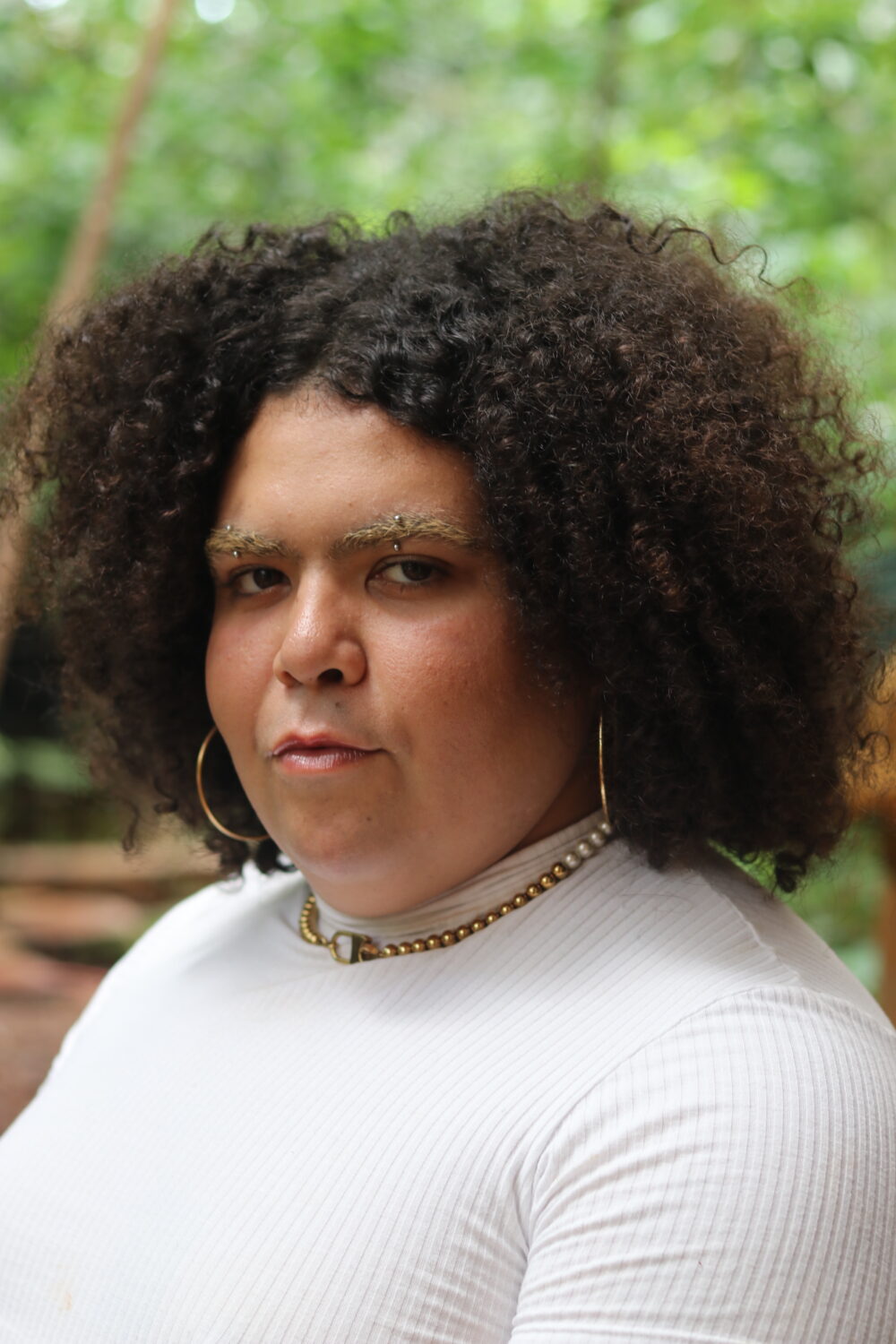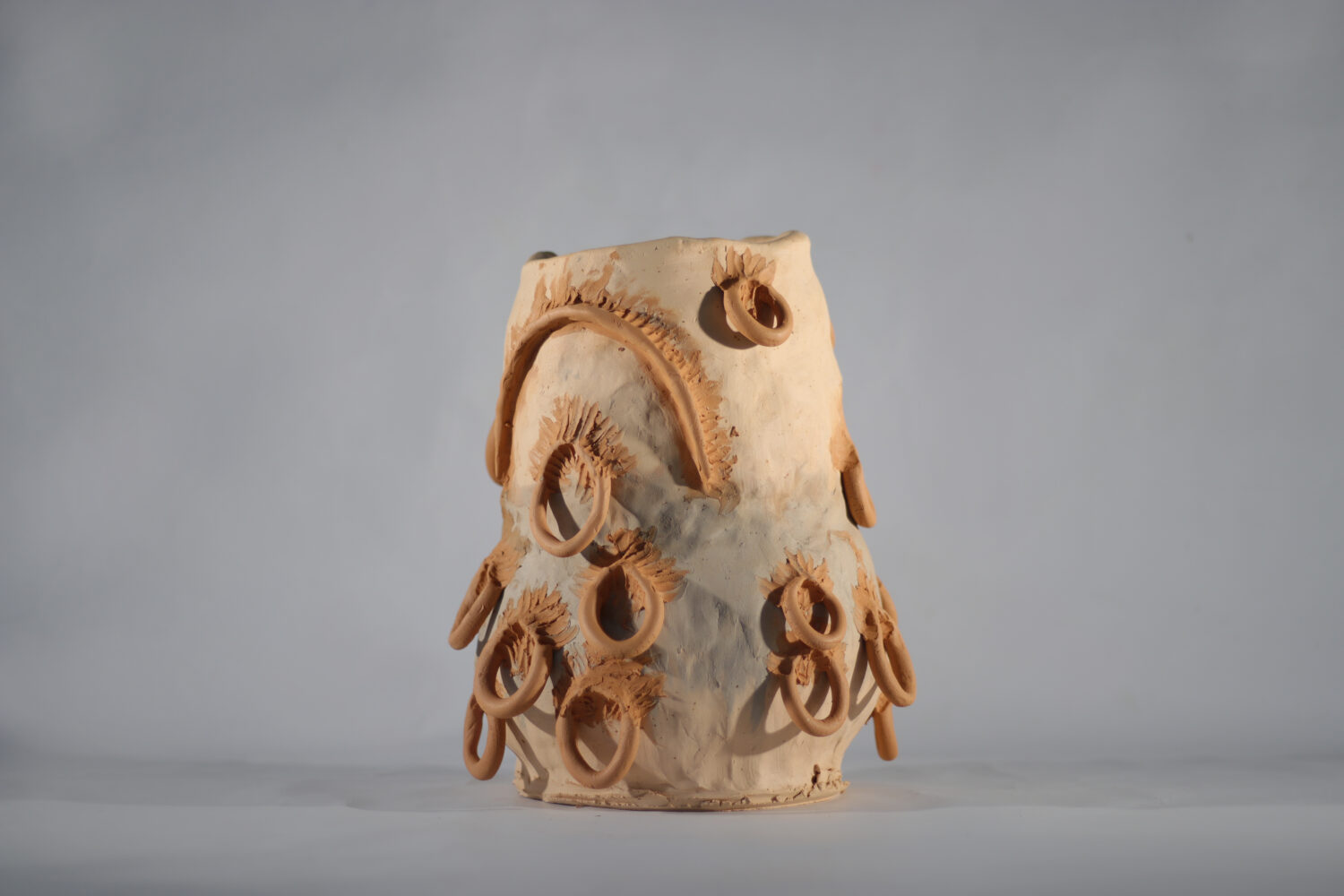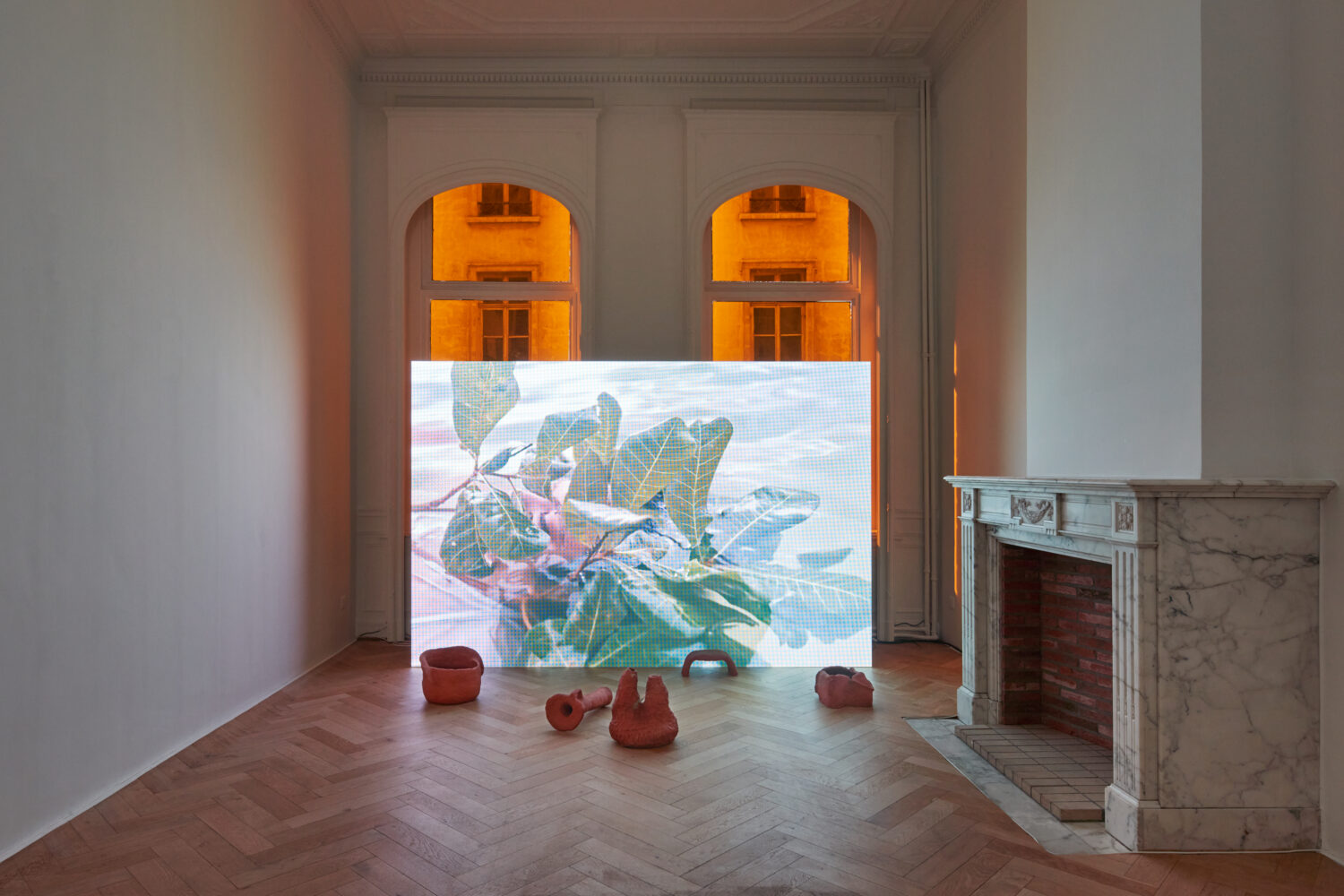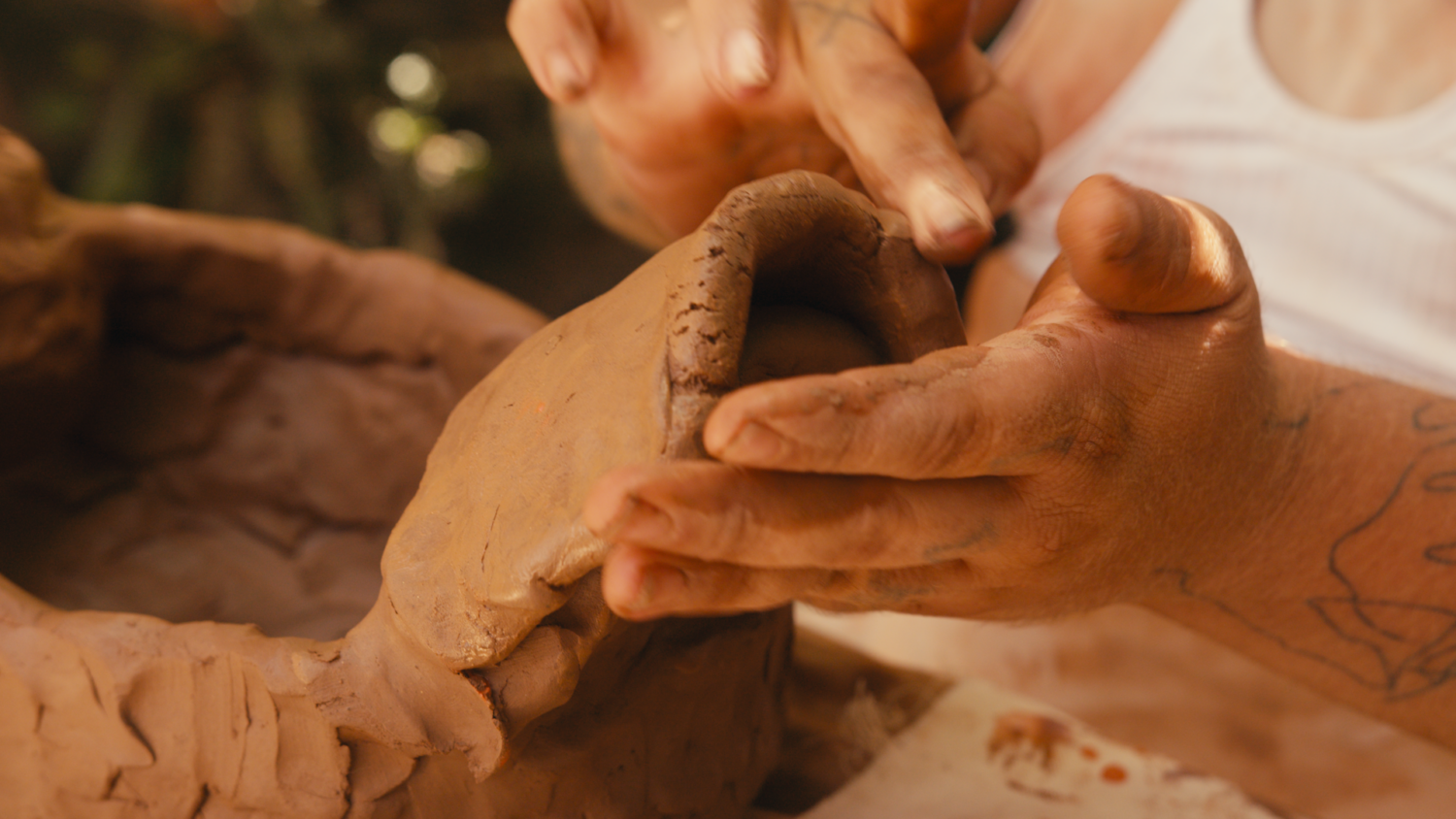Interview: For Brazilian Artist Jota Mombaça, There’s No Place Like Home
By Keshav AnandHailing from Natal, on Brazil’s northeastern tip, multidisciplinary artist Jota Mombaça describes herself as a nonbinary travesti of colour, reclaiming the Latin American slang. Working between Lisbon and Amsterdam, the artist is featured in the Disobedience Archive at the Arsenale of the 60th Venice Biennale, and recently showcased video installations, a series of ceramics, and, for the first time, a collection of drawings at the newly opened Martins&Montero gallery in both Brussels and São Paulo.
Through performance, fiction, and strategies of knowledge production, Mombaça’s practice primarily engages with anti-colonial critique, as well as ideas around gender disobedience. Emerging from the interplay of poetry, critical theory, and performance, the sonic and visual elements of words are central to her artistic output. Discussing the evolution of her practice, her latest continent-spanning projects, and the fictional character she most relates to, Mombaça speaks with SC’s Keshav Anand.

Keshav Anand: What’s the thinking behind the works included in You Will Know/The Daughters of the Driest Rain at Martins&Montero?
Jota Mombaça: The exhibition presents a new body of work that emerges from a meditation on migration and the right to return, as well as on the transformation of landscape due to emergent climate conditions. The performative drawings and paintings, for instance, constitute a study on soil and the internal movement of land, while the ceramics and the video work instantiate a consideration of the depths of the Earth — marking the conceptual journey of the project as a form of excavation, in which both the land and the body are materially intertwined.
Throughout the creative process, ideas of sustainment, depth and resilience to the climate manifested in the fabrication of works and in the composition of the exhibition architecture. The works are also deeply related to my personal history of migration and the desire to reimagine notions of belonging from a diasporic point of view.

KA: Gender disobedience and anti-colonial critique are central themes in your work — I’m curious how you see these areas of focus intersecting?
JM: I believe they are inseparable. The colonial apparatus is one deeply embedded in fascist body normalisation, therefore entangled with gender-related systems of oppression. My critical work has always been committed to exposing such entanglement, proposing an interconnected way of disrupting coloniality and cisgender fundamentalism altogether.
KA: What fictional character do you most relate to?
JM: I believe the answer to this question would change on a different day, but right now I feel that the answer is Lilith, from Octavia Butler’s Dawn. She is a human trapped in a deep contradiction, having to choose between traditional humanity and a metamorphic pact with an alien species. I am deeply moved by how she moves across these conflicting poles, accepting what is not an option and building possibility in the face of the impossible. Her story is one of courageous surrendering! I believe we all have a lot to learn from her.

KA: Your practice embraces poetry, moving image, drawing, ceramics, and more — are there any new mediums you are eager to explore in the near future?
JM: The mediums often emerge in my practice in relation to a project or research. Recently, due to my engagement with elemental practices and climatic research, installation and sculpture became quite an important medium. Walking in nature, looking into waterfront ruins, remnants of abandoned water vehicles and different rock formations, I keep thinking that time is the best sculptor and the environment conditions are often the most generative installation composers. In this sense, I want to continue to learn with environments and temporality about the making of sculptures and immersive installations.
KA: Can you talk about your work in the Disobedience Archive in the Arsenale of the 2024 Venice Biennale?
JM: It is a video work from 2020, originally commissioned by the 22nd Sydney Biennale. The work’s presentation is quite different at La Biennale, due to its implication in the Disobedience Archive. It is basically the video remix of a short visionary fiction text I wrote back in 2019. The video is mostly composed out of words, a gif like image of my body breathing under the earth and digital variations of it. It is a dear work for me and I am happy it continues to resonate to this day.

KA: If you could live anywhere for a year, where would it be?
JM: Probably home. Due to the fundamentally transnational quality of my work, and the need to travel constantly either to present or produce work, home is the place I miss the most. I would love to spend a whole year there, re-accessing an intimate temporality, unbounded from my career.
KA: And what are you currently reading?
JM: I am reading this book called Island, edited by Him Mark Lai, Genny Lim and Judy Yung, about the poetry carved on the walls of the former migrant detention centre of Angel Island, in the San Francisco Bay Area. It is an important research material for an upcoming solo show I will open in a former US Embassy Building in the Netherlands in September.
Feature image: Installation view of Jota Mombaça’s You Will Know/The Daughters of the Driest Rain at Martins&Montero, Brussels. Photo by GRAYSC. Courtesy of Jota Mombaça and Martins&Montero